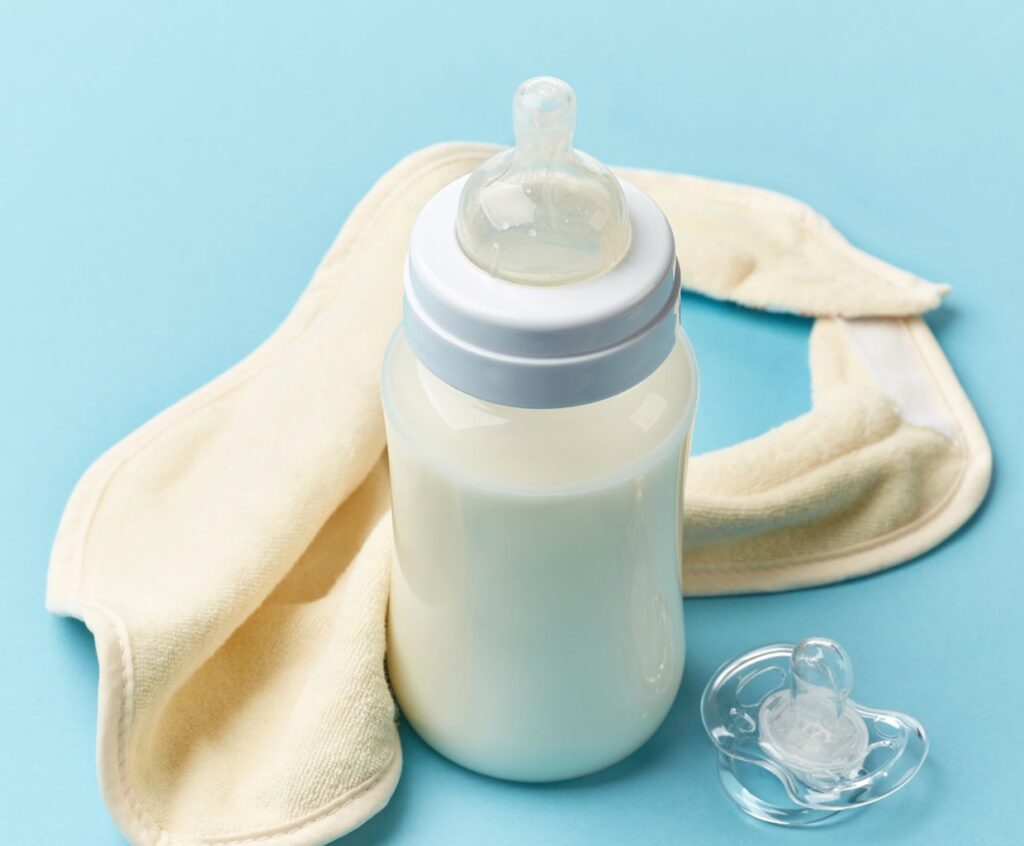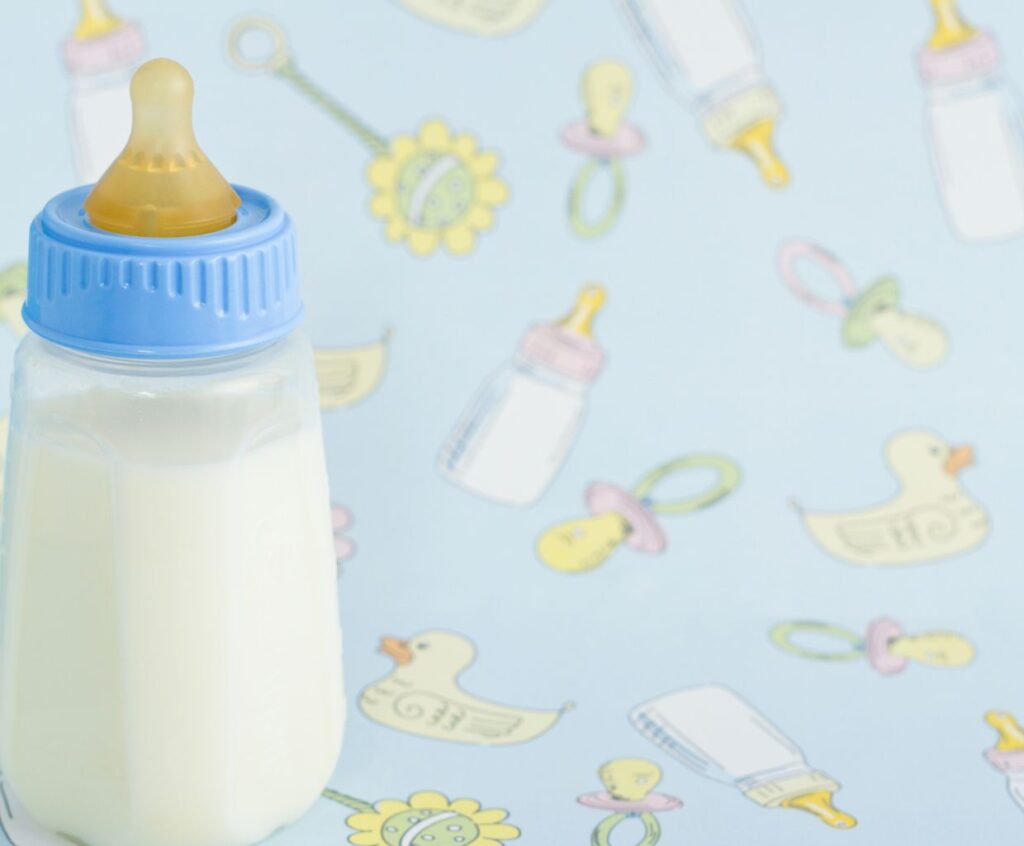How To Choose The Best Baby Bottle – 5 Things To Consider
As a parent, it’s easy to get caught up in all the latest baby products, but sometimes it’s best to stick with what works. When looking for the best baby bottle, a few features should be high on your list of priorities.
If you’re trying to pick out baby bottles, you first need to decide what type of nipple your baby prefers. You also need to decide whether you want your baby’s bottle to have a handle. If you have a newborn, they may not be able to hold the bottle themselves yet, so a nipple that flows easily is best.
Nipple Types In Baby Bottles
When you are choosing the best baby bottle for your baby, there are several things that you need to consider. One of the most important things is the nipple type. Some nipples are designed for newborns, while others are best suited for older babies.
A nipple with a slow flow will help a newborn drink from their bottle, while one with a faster flow will be better suited for older babies who can hold and drink from it without assistance.
Nipple Material
There are three main types of nipples that you’ll find when looking for a baby bottle: latex, silicone, and soft plastic. Each one has its benefits and drawbacks, so here is more information about each type of nipple.
- Latex nipples have been popular in Europe for decades but weren’t introduced to the United States until recently. The main advantage of latex is it’s soft and flexible, making it great for babies just learning to drink from a bottle. They also tend to be very easy on the teeth and gums of your little one. The downside is that they can get chewed up over time, especially if your baby has an oral aversion or sensory processing disorder.
- Silicone is also gaining popularity because it doesn’t impart any taste onto milk-like latex can. Silicone nipples are made from a medical-grade silicone called Polydimethylsiloxane (PDMS). This material is hypoallergenic and doesn’t have any BPA or phthalate content. They are used for breastfed babies because they’re more flexible and can mimic the movement of a mother’s breast. Because silicone is more flexible than other materials, it may be less durable if you use your bottle often or want to use it as an overnight option.
- Soft-plastic nipples are more common than they once were due to their affordability and relative lack of odor compared with latex or silicone—but they may not be your best bet if you’re worried about BPA exposure. “Some plastics indeed contain leachable BPA (bisphenol A), which is an endocrine disruptor that may affect how hormones work in babies’ bodies,” says Dr. Jennifer Shu, MD, FAAP (American Academy of Pediatrics). “However, most companies now use polypropylene plastic instead.”
Nipple Shape
Many moms are surprised to learn that there’s more than one kind of nipple shape. The two most common are flat and cone-shaped, but you may also see some bottles with a second ridge coming out from the top of the nipple (think PacMan).
Flat nipples are more accessible for babies to latch onto at first because they don’t have any ridges or bumps that might get in their way. But as your little one gets older and becomes more adept at breastfeeding, she’ll probably prefer the added suction provided by a cone-shaped nipple.
Nipple Size
There are several different nipple sizes available for baby bottles, and it’s essential to find one that fits your little one’s mouth properly. If you have a newborn who is still learning to suckle, the most important thing is finding an appropriate nipple size.
Nipple Texture
The more textured your nipple is, the more likely it will be to stay on baby’s mouth. “A good nipple has a flat bottom and some texture to it so that it stays in place without slippage,” says Dr. Jennifer Shu, MD, FAAP (American Academy of Pediatrics). If you’re looking for a bottle that mimics breastfeeding as closely as possible, opt for one with a wide variety of nipple shapes and sizes.
Some nipples are designed like tiny teats; others are shaped like pacifiers or anatomical ones that mimic the natural shape of mom’s breast—which can help prevent soreness in her nipples caused by suckling too hard.
Nipple Flow
The amount of flow you want to be expressed from the bottle. This can range from slow, medium, and fast. Slow is great for when your baby is a newborn and needs smaller amounts of liquid. Fast is best for older babies who take in large amounts at once.
There are a few different options, but these are the most common:
- Slow-flow nipples have small holes and allow milk to drip out slowly. These work well for newborns who haven’t learned how to suck yet.
- Medium-flow nipples have larger holes that let more milk out at once and work well for babies who can start sucking on their own.
Nipple Slits
Nipples with slits allow air to enter the bottle when feeding, which helps prevent gas bubbles in your baby’s tummy and gives him or her more comfort during feeding time. The slits also make it easier for your baby to drink from the bottle.
No products found.
Bottle Shape
The shape of the bottle is an essential factor to consider when choosing a bottle. The shape will affect how easy it is for your baby to hold and how comfortable they feel drinking from the bottle.
As with all things, there are pros and cons to each type of bottle. Here’s what you need to know:
- Flask-shaped bottles are for newborns because they resemble a mom’s breast. The narrow neck makes it easier for your baby to latch on while helping prevent colic (burping). However, once your little one reaches six months old and starts eating solid foods (with more teeth), they may find this type of nipple difficult because the hole seems too large. If you choose this style of nipple but want something with more flow control options available than just level 1/2 flow nipples that come standard on flasks, consider purchasing wide necked versions such as the [Avent Natural Wide Neck Bottle].
No products found.
- Teat-style (with shields) – These are good choices if your baby is exclusively breastfed or mostly breastfed but still likes a bit of milk from time-to-time! These bottles have a teat-style nipple that mimics your breast, but with a shield to protect it from babies who might bite on them. The downside of this type of bottle is that it sometimes leaks because the teat sits above the bottom of the bottle and pushes against air bubbles when squeezed.
No products found.
- Wide-necked – These are good if your baby prefers to drink from a bottle, but you want to avoid the nipple confusion that can occur with teat-style bottles. They are also easier to clean than traditional bottles because there are no nooks and crannies for moisture or food particles to hide in.
No products found.
The Size Of The Best Baby Bottle
You want to make sure your baby bottles are the right size for both you and your child. For example, if the bottle is too big, it will be harder for your baby to hold on their own without spilling it everywhere. If the bottle is too small, then it won’t be easy for them to use once they get older—and by then it’s likely that you’ll need two hands for something else!
Also, make sure that the neck of your bottle fits comfortably in their mouth, as this will make drinking from all kinds of positions possible without having any problems with choking or spilling. If there’s no way that they could fit into some areas due to being too large (or too small), then consider getting a different brand of feeder instead so that everything works together nicely instead of trying something out randomly just because someone else told them about how great these particular brands were supposed
Self-Feeding Baby Bottles
They are designed so babies can use them independently, which is great for when they’re old enough to start feeding themselves and don’t need you to hold the bottle anymore. This is especially useful if you have a lot of things going on in your life, as it means that they won’t depend on others to feed themselves or get fed while they’re at home with you. Babies will also learn how to hold onto something properly if it’s put into their hands early, which will help them with skills later in life.
No products found.
The reason why this is an important feature is that it’s so much easier for parents to be able to feed their babies when they’re doing things around the house or taking care of other kids. If you have more than one child, then this can be especially useful as you won’t have to constantly be going back and forth between them when they need something.
- Read Also: Best Facts From History of Baby Bottles
Choose The Best Baby Bottle
There are lots of options when it comes to baby bottles, and many work well, but certain factors depending on your baby may require different types of bottles.
Bottle type: The type of bottle is often determined by the shape and size of bottle. Some babies prefer the feel and design of wide-bottomed bottles (called “wide neck”), while others prefer narrow-necked or shaped bottles. Wide-necked bottles tend to be easier for babies with reflux because they don’t cause so much pressure on their tummies as regular-shaped ones do.
However, wide-necked bottles are only really necessary if your baby has reflux or colic—otherwise, a standard shaped bottle will work just fine. If you have multiple children in your family who use different types of nipples (for example, one child uses a wide neck while another uses a standard), then make sure you buy enough supplies that fit each child’s needs!
Shape: Baby bottles come in various shapes, and some are better suited for certain situations than others. If you’re looking for the best bottle for breastfed babies, then you’ll want to consider purchasing either a wide-necked or standard shaped bottle. These types of bottles are easy to fill with breastmilk without spilling and can be cleaned easily with soap and water (as opposed to those that must be put through the dishwasher).
If you’re looking for the best formula-fed baby bottle, you’ll want to consider purchasing a standard-shaped bottle. This type of bottle has been designed specifically for babies who use formula and can easily be cleaned in the dishwasher.
The best bottle for breastfed babies is one that has a wide neck, while the best bottle for formula-fed babies is one that has a standard shape. This will make filling and cleaning baby’s bottles easier without spilling any milk or formula in the process.
How To Choose The Best Baby Bottle – Conclusion
Hopefully, we’ve given you a few ideas on how to select the best baby bottles. There are many things to consider when choosing what will work best for your child, and these tips should help narrow down your options.
If you still have questions about these items, please ask us in the comments section below; we’ll happily answer them!


